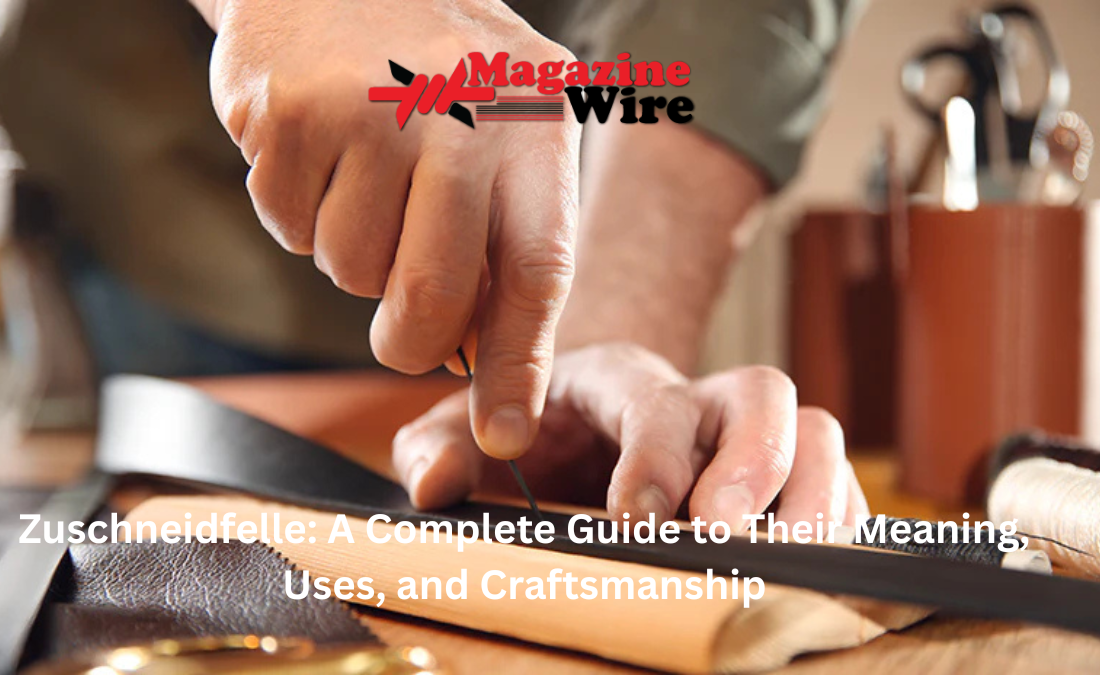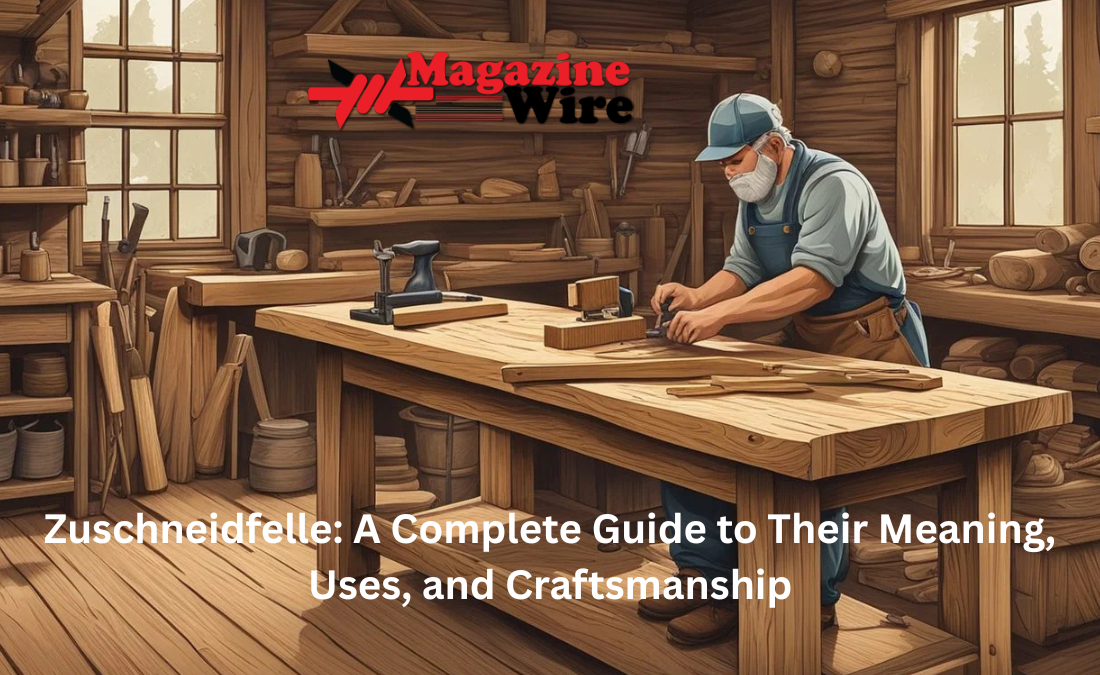Introduction to Zuschneidfelle
The German word “zuschneidfelle” translates to “cutting furs” or “prepared skins” in English. In the leather and fur industry, it refers to hides or skins that have been processed, softened, and prepared for cutting into specific patterns. Zuschneidfelle are essential in traditional clothing, modern fashion, upholstery, and crafts. Their production requires skillful preparation to ensure they are both durable and beautiful, making them a valued material in multiple industries.
History of Zuschneidfelle
Historically, zuschneidfelle were vital in communities where fur and leather were primary clothing materials. In cold European climates, especially in Germany, Austria, and Switzerland, skilled tanners and furriers prepared hides for warm, protective garments. The word became associated with hides that had reached the perfect stage for cutting and sewing. Over centuries, zuschneidfelle became a staple for traditional garments such as fur-lined coats, leather trousers, and decorative accessories in folk costumes.
Types of Zuschneidfelle
Different types of zuschneidfelle exist depending on the source animal, processing method, and intended use. Some common examples include:
- Sheepskin Zuschneidfelle – Soft, warm, and perfect for coats and boots.
- Calfskin Zuschneidfelle – Smooth, strong leather ideal for handbags and shoes.
- Goatskin Zuschneidfelle – Lightweight yet durable, often used in gloves.
- Rabbit Zuschneidfelle – Exceptionally soft, popular for trims and hats.
- Exotic Zuschneidfelle – Mink, fox, or reindeer, often used in luxury fashion.
Each type has unique characteristics in texture, warmth, and durability, influencing its final use.
The Production Process of Zuschneidfelle
Creating zuschneidfelle involves several careful steps:
- Hide Selection – Only hides with minimal defects are chosen for high-quality products.
- Tanning – A preservation process that prevents decay and keeps the hide flexible.
- Softening and Stretching – Ensures the hide is supple and easy to cut.
- Shaping and Trimming – Removes rough edges and prepares the hide for precise patterns.
- Finishing – May include dyeing, waterproofing, or polishing the surface.
The production process ensures that zuschneidfelle are functional for both traditional and modern uses.
Zuschneidfelle in Traditional Clothing
In German-speaking countries, zuschneidfelle are crucial in making Trachtenmode (traditional folk clothing). For example:
- Bavarian jackets often feature fur trims made from zuschneidfelle.
- Lederhosen can incorporate leather panels cut from high-quality zuschneidfelle.
- Winter coats and alpine boots use zuschneidfelle for warmth and style.
These garments are not just practical but also carry cultural significance, keeping traditional craftsmanship alive.
Modern Applications of Zuschneidfelle
While the historical uses remain, today zuschneidfelle are found in a variety of industries:
- High-End Fashion – Jackets, handbags, and shoes often use zuschneidfelle for a luxurious finish.
- Interior Design – Rugs, upholstery, and throws benefit from their warmth and aesthetic appeal.
- Sports Gear – Ski gloves and mountaineering boots sometimes include zuschneidfelle for insulation.
- Handmade Crafts – Artists and hobbyists use zuschneidfelle for doll-making, costume design, and accessories.
Their versatility makes them a material that bridges both tradition and modern design.

Quality Indicators of Zuschneidfelle
When choosing zuschneidfelle, buyers look for certain quality markers:
- Uniform Texture – Consistency in softness and thickness.
- Clean Surface – Minimal bald spots or scratches.
- Even Color – Whether natural or dyed, the hide should have uniform coloring.
- Supple Feel – The material should bend easily without cracking.
High-quality zuschneidfelle ensure better durability and aesthetic value in the finished product.
Ethical and Environmental Considerations in Zuschneidfelle Production
In modern times, the use of animal-based materials like zuschneidfelle faces ethical debates. Consumers increasingly demand sustainable and cruelty-free practices. This has led to:
- Ethical Sourcing – Using hides as byproducts from the food industry rather than hunting animals solely for fur.
- Eco-Friendly Tanning – Adopting plant-based or reduced-chemical tanning methods.
- Innovative Alternatives – Development of synthetic or plant-based materials that mimic the qualities of zuschneidfelle.
Ethical production methods allow traditional craftsmanship to adapt to modern values.
Caring for Zuschneidfelle
Proper care extends the life of zuschneidfelle products:
- Storage – Keep in cool, dry places away from direct sunlight.
- Cleaning – Use specialized leather and fur cleaning solutions.
- Avoid Moisture – Prolonged exposure to water can damage the hide.
- Professional Maintenance – For high-value zuschneidfelle items, occasional professional cleaning is recommended.
With the right care, zuschneidfelle can last for decades while retaining their beauty and texture.
The Future of Zuschneidfelle
As technology advances, the future of zuschneidfelle will likely blend traditional craftsmanship with innovation. This includes:
- Biotechnology – Lab-grown leather alternatives that replicate the texture of zuschneidfelle.
- Sustainable Fashion – Brands emphasizing long-lasting, ethically sourced hides.
- Custom Design – Digital tools to plan and cut zuschneidfelle patterns with minimal waste.
The market is expected to evolve while preserving the heritage of this unique material.
Conclusion on Zuschneidfelle
The term zuschneidfelle represents far more than just “cutting furs.” It embodies centuries of craftsmanship, cultural tradition, and adaptability in modern industries. From traditional Bavarian jackets to contemporary luxury handbags, zuschneidfelle remain an essential material for those who value quality, warmth, and artistry. While ethical and environmental concerns shape its future, the skill and care involved in producing zuschneidfelle ensure it will continue to hold a respected place in both heritage and innovation.




